Enhanced TDS
Identification & Functionality
- Chemical Family
- RTU Product Type
- Technologies
- Product Families
Features & Benefits
- Ready-to-Use Product Features
- Product Features
- Intrinsic Hydrophobicity
- Hydrophobicity transfer and recovery
- High mechanical properties
- Excellent dielectric properties
- Good thermal shock resistance
- High resistance to erosion under UV-radiation
- High tracking and arc resistance
- Extended life-time of insulation
Applications & Uses
- Composites Processing Methods
- Cure Method
- Product End Uses
- Markets
- Applications
- System Preparation
General instructions for preparing prefilled resin systems:
Long pot life is desirable in the processing of any casting resin system. Prefilled components help to shorten the mixing time considerably. The two components will be mixed in the desired quantity under vacuum and at slight elevated temperature (up to 60°C). For the mixing of medium - to high viscous casting resin systems and for mixing at lower temperatures, we recommend special thin film degassing mixers that may produce additional self-heating of 10 - 15°C as a result of friction. Depending on quantity, mixer device, mixing temperature and application, the mixing time is, under a vacuum of 1 to 8mbar, 0.25 to 1h. The premixed components packed according their mixing ratio, could be used per container. In case of filler sedimentation, it's recommendable to empty the container completely. Before partial use, the content must be carefully homogenized at elevated temperature. We recommend also the same preheating temperature to prevent air enclosures for disloading the components. In automatic feeding and mixing installations, both components will be degassed and homogenized under a vacuum of about 2 - 5mbar in their holding tanks again. From time to time the prefilled products are stirred up to avoid any sedimentation and irregular metering. After dosing and mixing with a static mixer, the system is fed directly to the vacuum casting chamber or, in case of automatic pressure gelation process, directly to the hot casting mould. Over feeding tubes one can serve several individual casting stations.
- Applications
Outdoor electrical insulation material for medium and high voltage applications in humid conditions: apparatus components, pin/post insulators, bushings, instrument transformers, sensors, etc.
Properties
- Physical Form
- Processing Viscosities
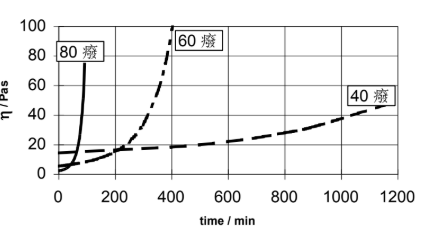
Figure 1: Viscosity increase at 40, 60 and 80°C
(measurements with Rheomat 115, Shear rate D = 10S-1)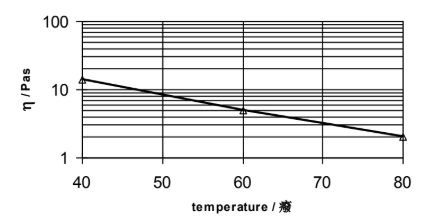
Figure 2: Initial viscosity as a function of temperature
(measurements with Rheomat 115, D = 10S-1)
Technical Details & Test Data
- Gelation / Cure Time
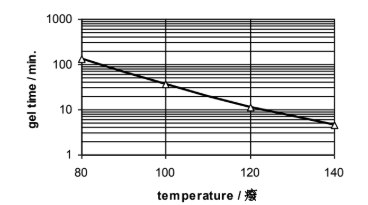
Figure 3: Geltime as a function of temperature
(measured with Gelnorm Instrument, ISO 9396)- Specific Instructions
Conventional batch mixers should be cleaned once a week or at the end of work. For longer interruptions of work, the pipes of the mixing and metering installations should be cooled and cleaned with the resin component to prevent sedimentation and/or undesired viscosity increase. Interruptions that extend over a weekend (approx. 48h) without cleaning are possible if the pipes are cooled at temperatures below 18°C. Viscosity increase and gel time at various temperatures refer to Fig. 1 and 3.
Mould temperature
APG process : 130 - 150°C
Conventional vacuum casting : 80 - 100°C
Demoulding times (depending on mould temperature and casting volume)
APG process : 10 - 30min
Conventional vacuum casting : 2 - 4h
Cure conditions
APG process : 10h at 140°C
Conventional vacuum casting : 16h at 140°CTo determine whether crosslinking has been carried to completion and the final properties are optimal, it is necessary to carry out relevant measurements on the actual object or to measure the glass transition temperature. Different gelling and cure cycles in the manufacturing process could lead to a different crosslinking and glass transition temperature respectively.
- Mechanical & Physical Properties
Determined on standard test specimen at 23°C.
Cured for 6h/80°C + 10h/140°CProperty
Test Method
Unit
Value
Tensile Strength
ISO 527
MPa
80 - 100
Elongation at Break
ISO 527
%
1.0 - 1.4
E Modulus from Tensile Test
ISO 527
MPa
11,200 - 11,800
Flexural Strength at 23°C
ISO 178
MPa
130 - 150
Surface Strain at 23°C
ISO 178
%
1.1 - 1.5
Double Torsion Test
CG 216-0/89
MPa·m½
24 - 26
Specific Energy at Break (Gic)
Not specified
J/m²
420 - 470
Glass Transition Temperature (DSC)
ISO 11357-2
°C
105 - 120
Coefficient of Linear Thermal Expansion
ISO 11359-2
10⁻⁶/K
25 - 32
Thermal Conductivity
ISO 8894-1
W/(m·K)
0.95 - 1.05
Water Absorption (10 days at 23°C)
ISO 62
%
0.05 - 0.15
Water Absorption (60 min at 100°C)
ISO 62
%
0.05 - 0.15
Decomposition Temperature
DTA
°C
350
Density (Filler load: 66% by wt.)
ISO 1183
g/cm³
1.85 - 1.95
- Electrical Properties
Determined on standard test specimen at 23°C.
Cured for 6h/80°C + 10h/140°CProperty
Test Method
Unit
Value
Breakdown Strength
IEC 60243-1
kV/mm
21 - 26
Diffusion Breakdown Strength
DIN VDE 0441-1
Class
HD2
Temperature of Specimen after Test
Not specified
°C
≤ 24
HV Arc Resistance
IEC 61621
s
182 - 186
HV Tracking and Erosion Resistance
IEC 60587
Class
1B3.5
Tracking Resistance (Test Solution A)
IEC 60112
CTI
> 600-0.0
Tracking Resistance (Test Solution B)
IEC 60112
CTI
> 600M-0.1
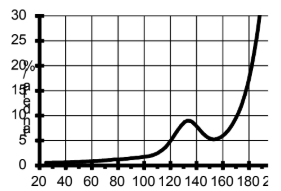
Figure 4: Loss factor (tan) at 50 Hz (IEC 60250)
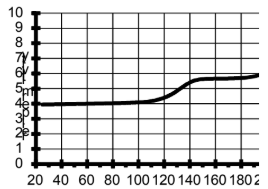
Figure 5: Rel. permitivity (r) at 50 Hz (IEC 60250)
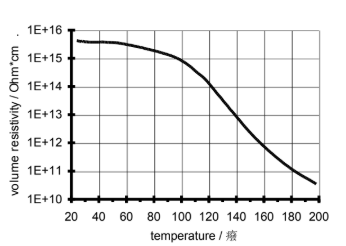
Figure 6: Volume resistivity at 50 Hz (IEC 60093)
- Special Properties
Thermal Shock Resistance
Temperature shock test conditions:- Test specimen with embedded sharp edged metal parts (edge radius: 2 mm)
- Molding time: 15 min
- Mold temperature: 135 - 140°C
- Post curing: 10 h/140°C
Test result:
Average crack temperature: -62°C
(For comparison: CY 184 / XW 1235 / DY 062 / 66 % W12EST: -12°C)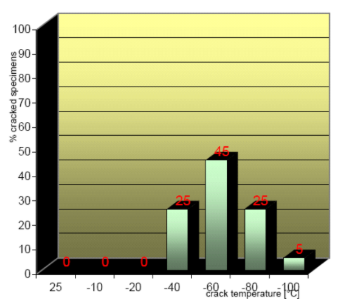
Fig. 6 Temperature shock test
Safety & Health
- Industrial Hygiene
Mandatory and recommended industrial hygiene procedures should be followed whenever our products are being handled and processed.
- First Aid
Contamination of the eyes by resin, hardener or casting mix should be treated immediately by flushing with clean, running water for 10 to 15 minutes. A doctor should then be consulted.
Material smeared or splashed on the skin should be dabbed off, and the contaminated area then washed and treated with a cleansing cream . A doctor should be consulted in the event of severe irritation or burns. Contaminated clothing should be changed immediately.
Anyone taken ill after inhaling vapours should be moved out of doors immediately. In all cases of doubt call for medical assistance.- Handling Precautions
Protective clothing : Yes
Gloves : Essential
Arm protectors : Recommended when skin contact likely
Goggles/safety glasses : Yes
Respirator/dust mask : Recommended
Skin protection
Before starting work : Apply barrier cream to exposed skin
After washing : Apply barrier or nourishing cream
Cleansing of contaminated skin Dab off with absorbent paper, wash with warm water and alkali-free soap, then dry with disposable towels. Do not use solvents
Clean shop requirements Cover workbenches, etc. with light coloured paper. Use disposable breakers, etc.
Disposal of spillage Soak up with sawdust or cotton waste and deposit in plastic-lined binVentilation:
of workshop Renew air 3 to 5 times an hour
of workplace Exhaust fans. Operatives should avoid inhaling vapours.
Storage & Handling
- Storage Conditions
Store the components dry at 6 - 28°C, in tightly sealed original containers. Under these conditions, the shelf life will correspond to the expiration date stated on the label. After this date, the product may be processed only following reanalysis. The hardener ARADUR® HW 5958 CI is sensitive to humidity. Partly emptied containers should be tightly closed immediately after use. Prefilled, liquid components always show a small sedimentation. Before use, stir up carefully the components at about 40 - 50°C.
